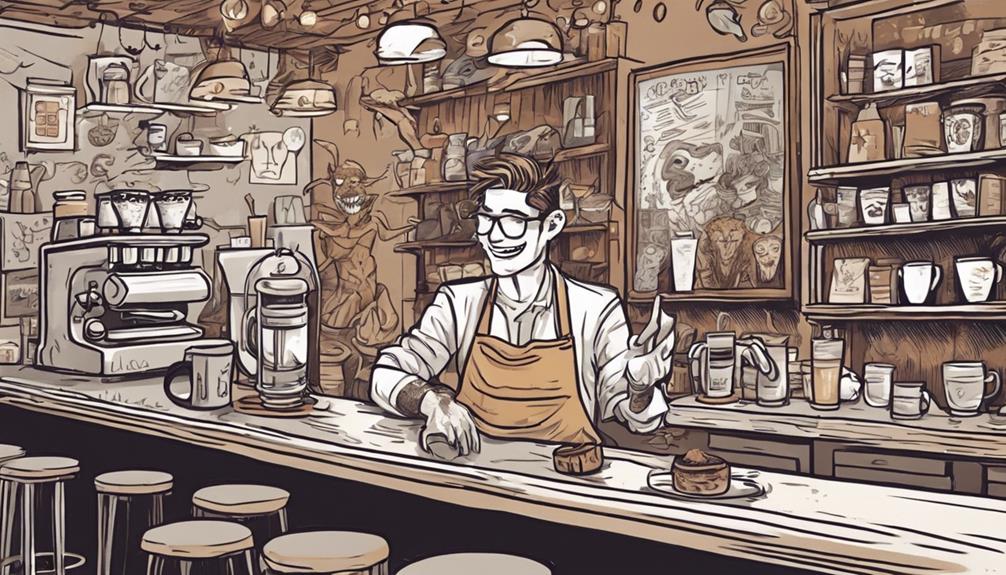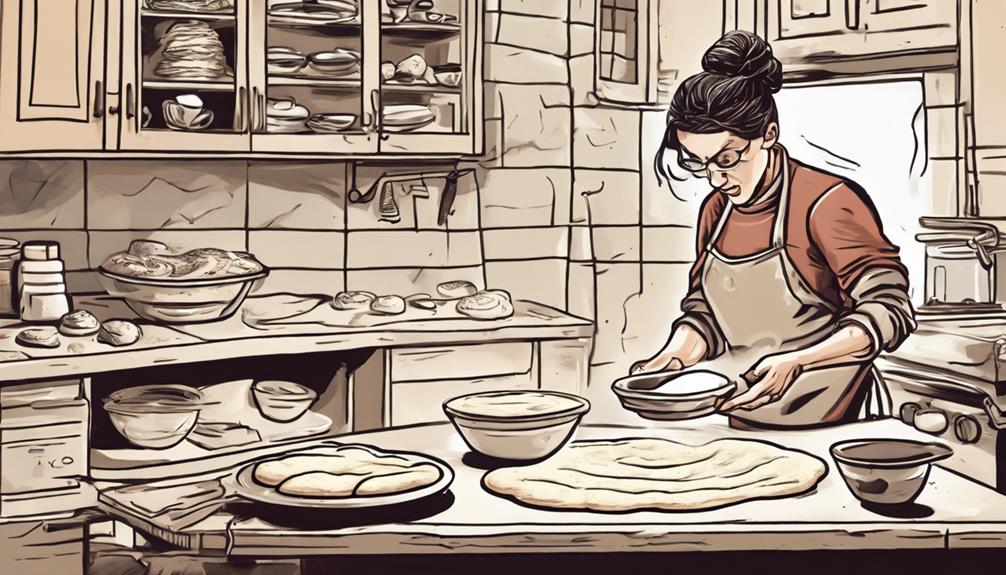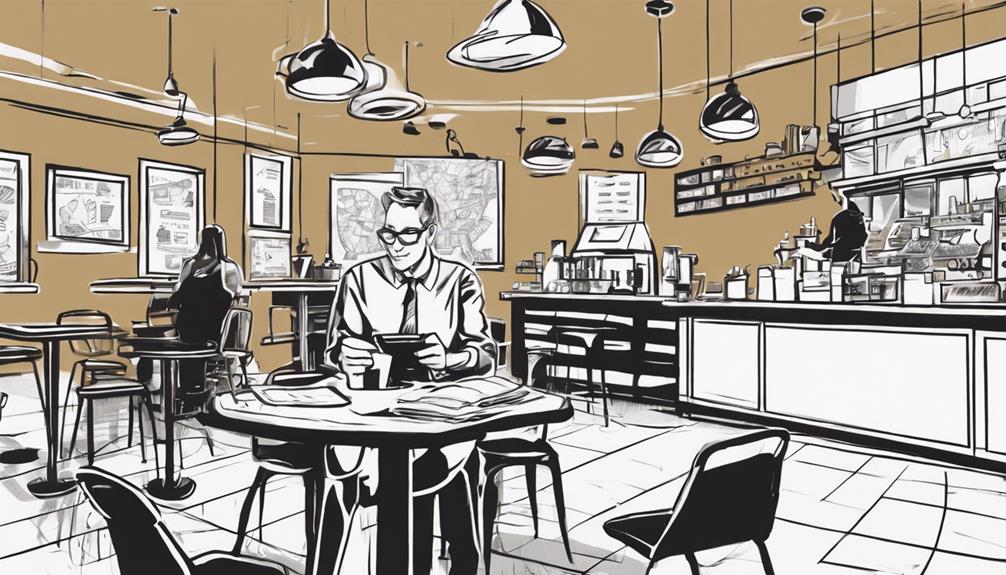Excited to upgrade your space with a **lift-top coffee table**? Get ready for a fun project by gathering materials and tools. Follow clear instructions to build the table efficiently. Pay attention to dimensions and design for a personalized finish. Consider the cost and choose **quality materials** for durability. Learn about the versatility of lift-top mechanisms and **corner brackets for stability**. Ensure easy operation and solid support for your creation. Apply a sleek finish like polyurethane for a stylish look. Appreciate your handiwork, adding chamfered edges for a refined touch. Enjoy the **practical and aesthetic advantages** of your new coffee table. Craft confidently and creatively – more insights await your project. Explore customizing options like hidden storage or unique hardware for a distinctive appearance. After completing your project, think about displaying and possibly selling your creations at **mobile coffee trailer sales** or local markets. Embrace the satisfaction of making a functional and elegant piece of furniture while sharing your passion with fellow fans of handmade items. Your lift-top coffee table will surely spark conversations, whether at home or at a mobile coffee trailer sales event. Keep the creativity flowing!
Key Takeaways
- Use hardwood and lift top mechanism for durability and functionality.
- Follow step-by-step construction guide for precise assembly.
- Consider dimensions, design, and personalization options.
- Opt for customization like hidden compartments or walnut accents.
- Finish with polyurethane for a professional look and enjoy craftsmanship satisfaction.
Materials and Tools Needed
You'll need hardwood, a lift top mechanism, plywood, glue, and pocket hole screws for building the coffee table with a lift top.
When selecting the hardwood, consider using species like ash for durability and aesthetics. The plywood will be essential for constructing the sides, bottom, and top pieces of the table. Make sure you have a table saw to accurately cut the wood to the required sizes, such as 36' x 9' and 34.5' x 34.5'.
The lift top mechanism will allow for easy adjustment and added functionality to your coffee table. Additionally, pocket screws will be necessary for securely joining the different wooden components together.
Investing in quality materials like hardwood and a reliable lift top mechanism might increase the total cost, estimated around $175. Remember, depending on the specific measurements of your lift kit, you may need wooden braces to support the lift table.
Customizable design options are available, allowing you to personalize the coffee table with different wood types and sizes according to your preferences.
Step-By-Step Construction
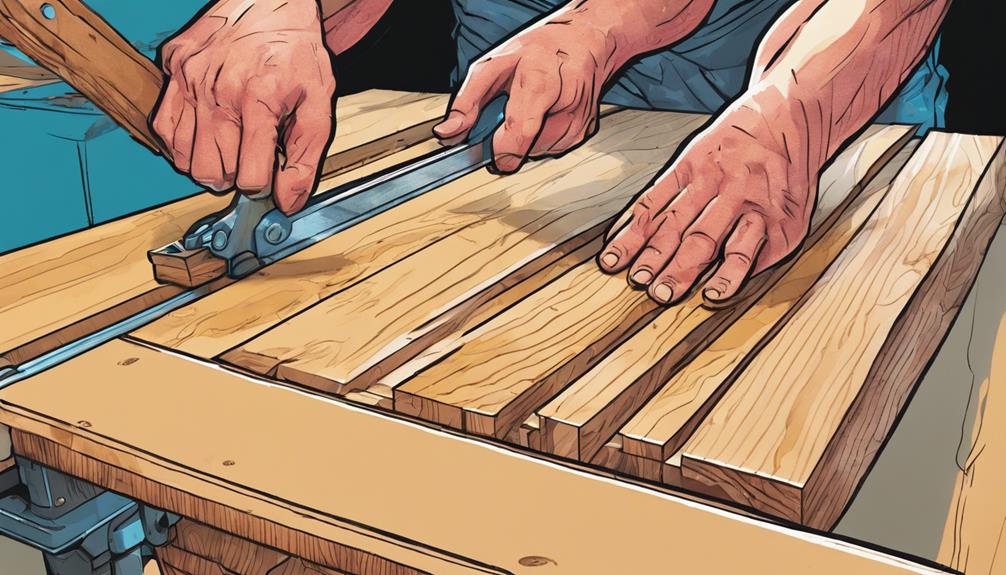
To begin constructing the lift top coffee table, cut the hardwood pieces to the specified dimensions as outlined in the building plan. Use a track saw for precise cuts to guarantee the pieces fit together seamlessly.
Assemble the side panels and base around the plywood, making sure everything is securely attached. Next, affix the lift top mechanism to the base, verifying it operates smoothly and securely. Position yourself ergonomically to work comfortably while assembling the table components.
Customize the top by adding additional wood pieces to create a unique design that suits your style. Once the construction is complete, finish the table by staining it to your desired color and applying a coat of polyurethane for a polished look.
Following these steps will result in a beautifully crafted lift top coffee table that's both functional and aesthetically pleasing.
Dimensions and Design

When building your coffee table, consider the specifications for the table size, incorporating elements of aesthetic design for a sleek finish.
You can further personalize the table with various customization options to suit your style preferences.
The dimensions and design choices will play an essential role in the overall look and functionality of your new coffee table.
Table Size Specifications
The table size specifications for the lift-top coffee table feature dimensions of 39 x 25.5 x 8 inches, combining functionality with a compact design.
The top, constructed from four 1×8 ash pieces, provides a sturdy surface for daily use. Its base, made of plywood, ensures stability and support for the lift mechanism and top. Additionally, a clear top coating adds a modern touch to the overall aesthetic.
Inside, the compartments are customizable, with dimensions like 34.5' x 9', offering ample storage options according to individual preferences. This design not only prioritizes practicality but also allows for personalization to suit your needs.
With its compact size and customizable features, this lift-top coffee table strikes the perfect balance between style and practicality, making it a versatile and valuable addition to your living space.
Aesthetic Design Elements
Several aesthetic design elements enhance the visual appeal and functionality of the lift-top coffee table, including its dimensions and materials. The table with a lift typically measures approximately 39 x 25.5 x 8 inches, with a lift mechanism that raises it by 6 1/2 inches.
When you envision the table, visualize a clear top coating that adds a shiny finish, corner accents crafted from solid walnut for a touch of sophistication, and sleek aluminum legs that provide a modern and sturdy base.
These design elements combine to create a stylish and versatile piece of furniture that not only elevates the aesthetic of your space but also offers practicality and convenience. The solid walnut corner accents bring warmth and elegance, while the aluminum legs guarantee stability and a contemporary look.
With the lift-top feature, you can seamlessly shift from using the table for dining or working to enjoying a cozy coffee break, making it a versatile and functional addition to your home.
Customization Options
To customize your lift-top coffee table, consider adjusting the dimensions and design to suit your specific preferences and space requirements. You can personalize the table top, lift mechanism, customizable compartments, and personalization options according to your needs. Here are some customization options you can choose from:
| Customization Options | Description | Example |
|---|---|---|
| Table Top | Choose the size and shape of the table top to fit your space and style. | Rectangular table top |
| Lift Mechanism | Opt for an adjustable lift mechanism to transform the table for different purposes. | Hydraulic lift system |
| Customizable Compartments | Customize inside compartments for additional storage solutions tailored to your needs. | Hidden drawer compartments |
Cost and Materials
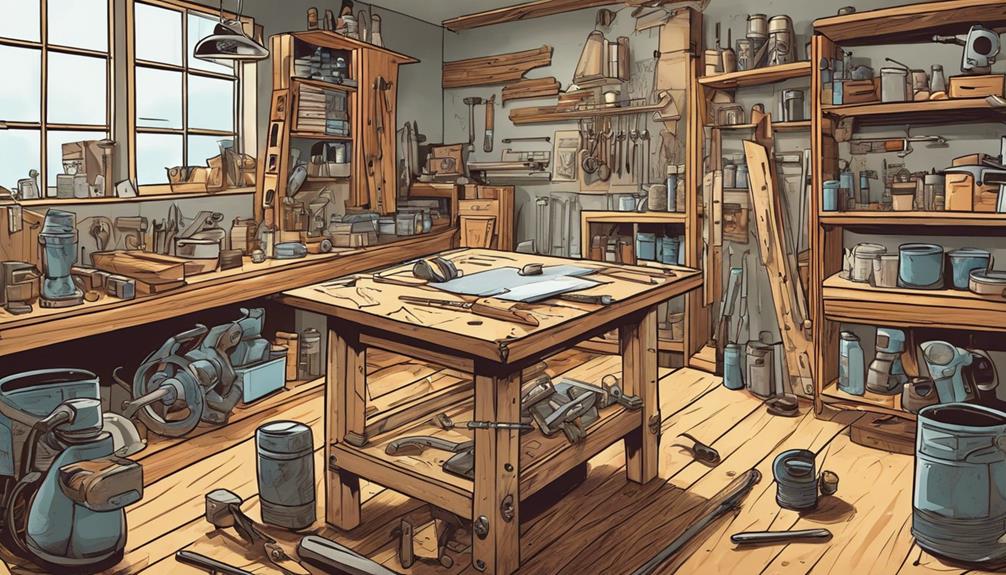
When building a coffee table with a lift top, you'll need to budget approximately $175 for materials such as hardwood, a lift top mechanism, glue, and plywood.
Here are the essential items required:
- Hardwood: Choose quality hardwood like ash for its beautiful grain patterns and staining properties, ensuring a durable and aesthetically pleasing table.
- Lift Top Mechanism: Invest in a reliable lift top mechanism that will allow for smooth and easy operation of the table's lifting function, adding versatility to its usage.
- Glue and Plywood: Use strong glue to securely bond the wood pieces together, and high-quality plywood for the table's base and other structural components.
Alternative Applications

Explore the adaptability and versatility of the lift top mechanism beyond its traditional use in a coffee table project.
The lift top mechanism can be creatively adapted for a sit-stand desk variation, offering a functional and ergonomic solution for your workspace.
By incorporating the lift top mechanism into different furniture projects, you can enjoy the aesthetically pleasing design of a coffee table with a lift top in various settings around your home.
The customizable nature of the mechanism allows for personalized touches, enabling you to tailor the features to your specific needs and preferences.
Whether it's adjusting the height or adding additional storage compartments, the lift top mechanism offers endless possibilities for customization.
Let the lift top coffee table project inspire you to explore innovative designs and create DIY furniture pieces that showcase the unique capabilities of this versatile mechanism.
Assembly Instructions
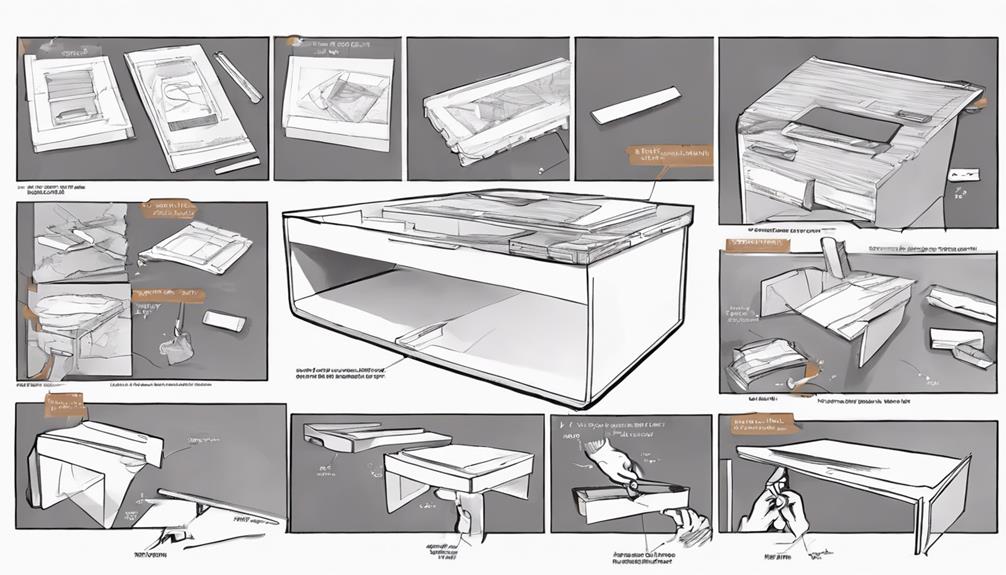
Attach the lift top mechanism to the base using 5/8 inch #6 screws with washers.
Secure the lift brackets by drilling pilot holes and using 1.25 inch flat-headed screws.
Add additional support with corner brackets attached with pocket screws.
To assemble your coffee table with a lift top, follow these steps closely:
- Connect Lift Top Mechanism: Start by fastening the lift top mechanism to the base using 5/8 inch #6 screws with washers. Make sure that the mechanism is centered and aligned correctly for optimal functionality.
- Fasten Lift Brackets: Drill pilot holes and secure the lift brackets using 1.25 inch flat-headed screws. This step is essential for ensuring the stability and smooth operation of the lift table.
- Enhance Support with Corner Brackets: Strengthen the structural integrity of your coffee table with lift by attaching corner brackets using pocket screws. This extra support will help distribute weight evenly and prevent wobbling during use.
Finishing Touches and Enjoyment

Now that you've added the final touches and applied the polyurethane finish, it's time to step back and enjoy your creation.
Admiring the sleek edges and smooth surface, you can feel proud of the craftsmanship put into your coffee table.
With its lift top, storage, and unique copper pipe base, your creation isn't only functional but also a beautiful piece to enjoy in your living space.
Final Touches
To complete the coffee table project, make certain that the final touches, such as chamfering edges and applying a polyurethane finish, are done meticulously for a professional and satisfying result.
Here are three key steps to perfecting your coffee table:
- Chamfering Edges: Use a block plane to create clean and angled edges on the tabletop and sides. This step not only adds a touch of sophistication but also enhances the overall aesthetic appeal of the table.
- Applying Polyurethane Finish: Make sure you apply three coats of water-based polyurethane finish with an HVLP sprayer. This process guarantees a durable and smooth surface, protecting the wood while showcasing its natural beauty.
- Admiring Your Creation: Once the final touches, including edge banding and polyurethane finish, are complete, take a moment to enjoy your finished coffee table. The lift top, storage compartments, and unique copper pipe base will undeniably bring you immense satisfaction and pride in your craftsmanship.
Enjoying Your Creation
Experience the satisfaction of completing your coffee table with lift top by adding the finishing touches and admiring your craftsmanship.
Start by chamfering the edges with a block plane for a smooth finish on the plywood lift-top. Utilize a saw to cut the aluminum tubing to the desired length for the lifting mechanism, ensuring functionality and durability.
Apply three coats of water-based polyurethane finish using HVLP for a professional and protective surface on the coffee table. Once the finishing touches are complete, take a moment to revel in your creation.
The combination of storage, lift-top convenience, and a unique copper pipe base showcases your woodworking skills. Enhance both function and aesthetics by adding walnut edge banding, rubber feet, and bumpers. Each detail contributes to the overall appeal and usability of your coffee table, making it a piece to be proud of.
Sit back, relax, and enjoy the fruits of your labor with a cup of coffee on your newly crafted masterpiece.
Frequently Asked Questions
How Do You Close a Lift Top Coffee Table?
To close a lift top coffee table, gently push down on the lift top until it closes smoothly. Remember to clear the top of any items to avoid damage. Some tables have a lock for security. Follow manufacturer's instructions for proper use.
How Can I Raise My Table Higher?
To raise your table higher, simply activate the lift top mechanism. This handy feature offers adjustable height for your convenience. Guarantee a secure installation and stability when lifting the table to your desired level.
Why Do Coffee Tables Have Lift Tops?
Coffee tables have lift tops to provide versatile functionality for dining, working, or storage purposes. They offer ergonomic positions for various activities without the need for additional furniture. This feature is popular in small living spaces for its practicality.
Can You Eat on a Lift Top Coffee Table?
Sure, you can eat on a lift top coffee table! It offers a versatile surface for dining or working. The adjustable height makes it convenient for meals. Transform it into a dining table in seconds. Practical and space-saving for small spaces.
Conclusion
Congratulations on successfully building your own lift top coffee table!
Did you know that DIY furniture projects have increased by 30% in the past year alone?
Keep up the great work and enjoy your new piece of furniture that combines functionality and style.
Happy building!


